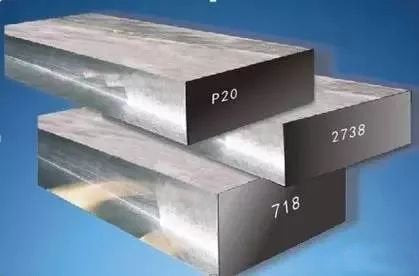Die Steel

Steel is a crucial component of mold quality, so choosing the right steel is of utmost importance.
When selecting steel, the following standards must be considered:
① Requirements for injection molding materials:
Different plastics require different types of steel depending on factors such as high polishing requirements, corrosion resistance, etc.
② Price:
It is important to choose steel that meets the requirements rather than simply selecting the most expensive option. To avoid unnecessary waste, mold steel should be selected based on the expected life of the die and the overall cost of the mold.
③ Heat treatment:
The surface treatment of the mold is also crucial.
Nitriding can increase the surface hardness of steel and extend the life of the die.
Electroplating can improve the performance of steel by modifying it and increasing its shine and corrosion resistance, especially for plastic materials that require these properties.
Structure Design

A well-designed mold structure not only considers the material properties of the product such as shrinkage, forming temperature and elastic tensile deformation coefficient, but also takes into account the speed of the cooling water and the speed of opening and closing modes .
By having a reasonable mold structure, the life of the die can be effectively prolonged and production can run smoothly. This leads to greater efficiency and cost savings.
Mold Processing
“A good tool is a good handyman.”
It is crucial to have a well-planned molding process. A reasonable process arrangement can shorten production cycles, reduce processing time and save costs effectively.
Furthermore, accurate and reasonable processing is essential to ensure the stability and longevity of the mold during production.
Processing errors can lead to burning or welding of the mold, causing loss to the mold, even if the welding is of high quality. Furthermore, such errors can impact the movement of the mold, shorten its useful life and even cause it to break during production.
Standard Parts

The capacity of a bucket is determined by its weakest point.
While this may seem obvious, it is often overlooked during the process.
The same applies to molds. Standard parts, which are not directly involved in molding but control the entire mold operation, play a critical role.
High-quality standard parts must be wear-resistant, sufficiently hard, highly precise and resistant to deformation.
Different brands offer a wide range of standard parts, so it's important not to simply choose the cheapest option. Doing so can seriously affect the quality of the mold.
Arrangement of matrices

Arranging the die requires the expertise of a qualified tool fitter and is considered the most technical aspect of the process, despite its deceptively simple nature.
The complexity of a mold largely depends on these skills.
Flat matrices are the simplest, as long as there are no sharp edges on the fractal surface.
However, arranging arrays of automotive parts can be more challenging, as they often have more irregular fractal surfaces and multiple sliders and top blocks.
Through proper mold arrangement, other issues can also be addressed, making it a comprehensive task.
Mold Polishing

Mold polishing is the final step in the mold manufacturing process.
Polishing has a direct impact on the appearance of plastic parts, becoming the most visually important aspect of the work.
Furthermore, polishing can improve the functioning of the mold, especially during the demolding process.
Sometimes die production can be hampered by inadequate polishing, resulting in increased resistance and difficulty during demolding, as well as stress marks and cracks at the top end.
Mold Assembly

Assembling a die is similar to assembling a machine, where every part and every screw must be in place. Any error can result in serious consequences, ranging from defective products and production interruption to completely damaged molds and scrap.
Therefore, the assembly process must be approached with great care and attention to detail.
Special emphasis must be placed on cleaning the mold during assembly, especially the water paths and screw holes, which must be thoroughly cleaned of iron filings to avoid customer dissatisfaction.
Hot Room or Cold Room

The impact on mold quality is minimal as the hot runner is typically specified by customers, especially large ones.
The quality and after-sales service of famous foreign brands are exceptional, so quality is usually not a problem.
However, the quality of some hot runners in China can vary greatly.
Small businesses often compromise quality to save costs and use unreliable heating and transmission components, which can cause problems.
The main challenge of the cold runner is to ensure a balanced injection molding process, with consistent injection nozzle size, injection pressure, etc.
Cooling water

Anyone with molding experience knows the importance of cooling in the molding process.
With rising material and labor costs, manufacturers aim to reduce the injection cycle for mass production, which results in increased mold temperatures. If not controlled effectively, this can result in mold malformation or even mold deformation, leading to dismantling.
Therefore, an efficient waterway design is crucial, including distribution density, diameter and connections between waterways.
Mold Maintenance
Mold maintenance mainly refers to maintenance activities during the production process.
Just like a car, if a mold is not used for a long period of time and is not maintained properly, it can become unusable.
Therefore, it is important to carefully maintain the mold each time it is used, paying close attention to rust on the forming parts and applying rust protection to the main moving parts.
Due to the mold's exposure to water during production, water droplets may accumulate on the mold during installation or disassembly. To avoid this, make sure the mold is completely dry before applying a layer of oil to protect it.

























































